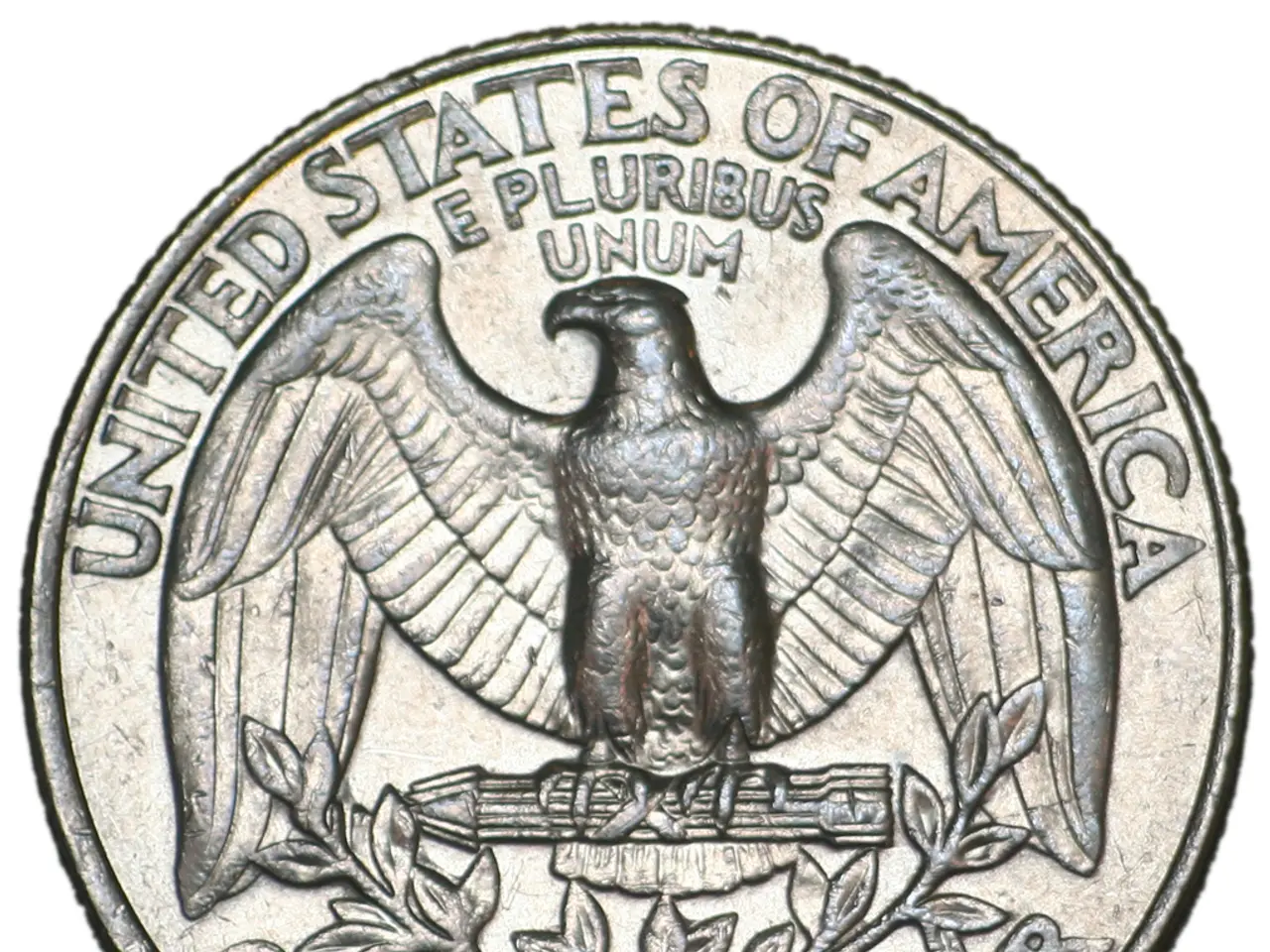Federal Reserve Holds Steady on Interest Rates Amid Tariff Concerns
Reason behind Powell's Decision to Maintain Interest Rates at June's FOMC Gathering
The Federal Reserve kept its key interest rate (federal funds rate) unchanged at a range of 4.25% to 4.5% on Wednesday, amid growing concerns that President Donald Trump's tariffs may cause inflation.
As expected, the Fed is taking a cautious approach, assessing the impact of tariffs on the economy before making any changes to its monetary policy. Fed officials have voiced concerns that tariffs could drive up prices, even though recent official figures suggest that inflation was decreasing, reaching as low as 2.3% in May 2025, when the tariffs were fully implemented.
In the lead-up to the latest FOMC meeting, inflation figures (for May 2025) had yet to show a significant impact of the new tariffs on US imports. As a result, Chairman Powell and the committee considered both the current robust economy and the anticipated increase in domestic prices later this summer before making their decision.
Stefan Hofer, Chief Investment Strategist for APAC at LGT Private Bank, explains, "The FOMC meeting was in line with expectations and in line with the Fed's dual mandate of full employment and price stability."
Merchants are concerned that they will have to pass on the cost of tariffs to their customers, which could reignite inflation as early as the second half of the year. Indeed, Fed policymakers plan to reduce interest rates by two quarter-points at some point this year, although they have refrained from doing so thus far due to these concerns.
According to the projections accompanying the interest rate decision, Fed policymakers anticipate only two rate cuts this year and one each in 2026 and 2027. The unemployment rate remains low, labor market conditions are robust, and inflation remains somewhat elevated.
The projected GDP growth for this year is 1.4%, and it is expected to rise slightly to 1.6% next year, representing a slower pace than previously forecast. Despite this, there are signs of tension between the Fed's dual mandate of full employment and price stability. According to Subho Moulik, CEO of Appreciate, "The Federal Reserve's decision to hold rates steady while projecting a 'stagflation lite' scenario of 1.4% growth and 3% inflation reveals a central bank navigating unprecedented uncertainty."
The Fed's decision to hold rates steady may have been influenced by pressure from President Trump to cut the rate by a full percentage point. Jigar Trivedi, Senior Research Analyst at Reliance Securities, points out, "Trump wants a full-point rate cut to offset the damage from his tariffs. But if the Fed delivers prematurely, markets will punish that kind of political submission."
Allianz Investment Management's Charlie Ripley summarizes the Fed's approach, "With the committee effectively split, the reality is that there currently is not a strong enough consensus built amongst the Fed to pursue the next rate-cutting campaign at the very least for the next few meetings."
In summary, the Federal Reserve's decision to keep interest rates steady reflects a cautious and hesitant approach in the face of ongoing uncertainty over President Trump's tariffs and their potential impact on inflation and the economy. The Fed is waiting for clearer economic signals before making any further adjustments to its policy.
Sources:
- Federal Reserve Statement on Interest Rates
- CPI Inflation Figures
- FOMC Meeting Projections
- Balance Sheet Normalization Announcement
- Despite concerns about President Donald Trump's tariffs potentially causing inflation, the Federal Reserve kept the interest rate (federal funds rate) unchanged, indicating a cautious approach towards investing in the current economic conditions.
- The market is anticipating two interest rate cuts by the Fed this year, as they aim to combat the elevated inflation rates and maintain stability in the finance sector.
- Businesses are worried about passing on the cost of tariffs to their customers, as it could lead to increased inflation and potentially reignite inflationary pressures in the market.
- The Federal Reserve's decision to hold steady on interest rates implies a conservative approach to investing in the face of continuing uncertainty surrounding President Trump's tariff policies and their effects on the economy and inflation.






